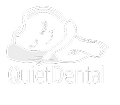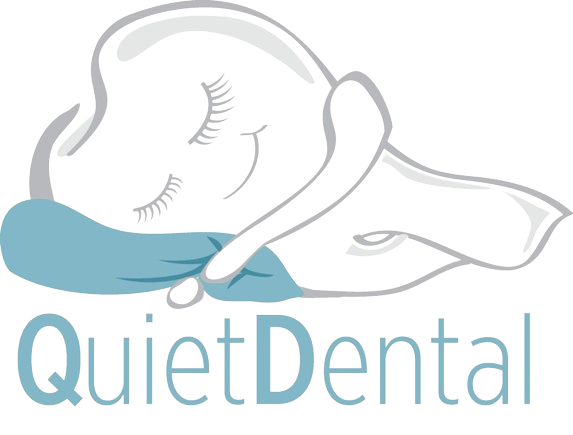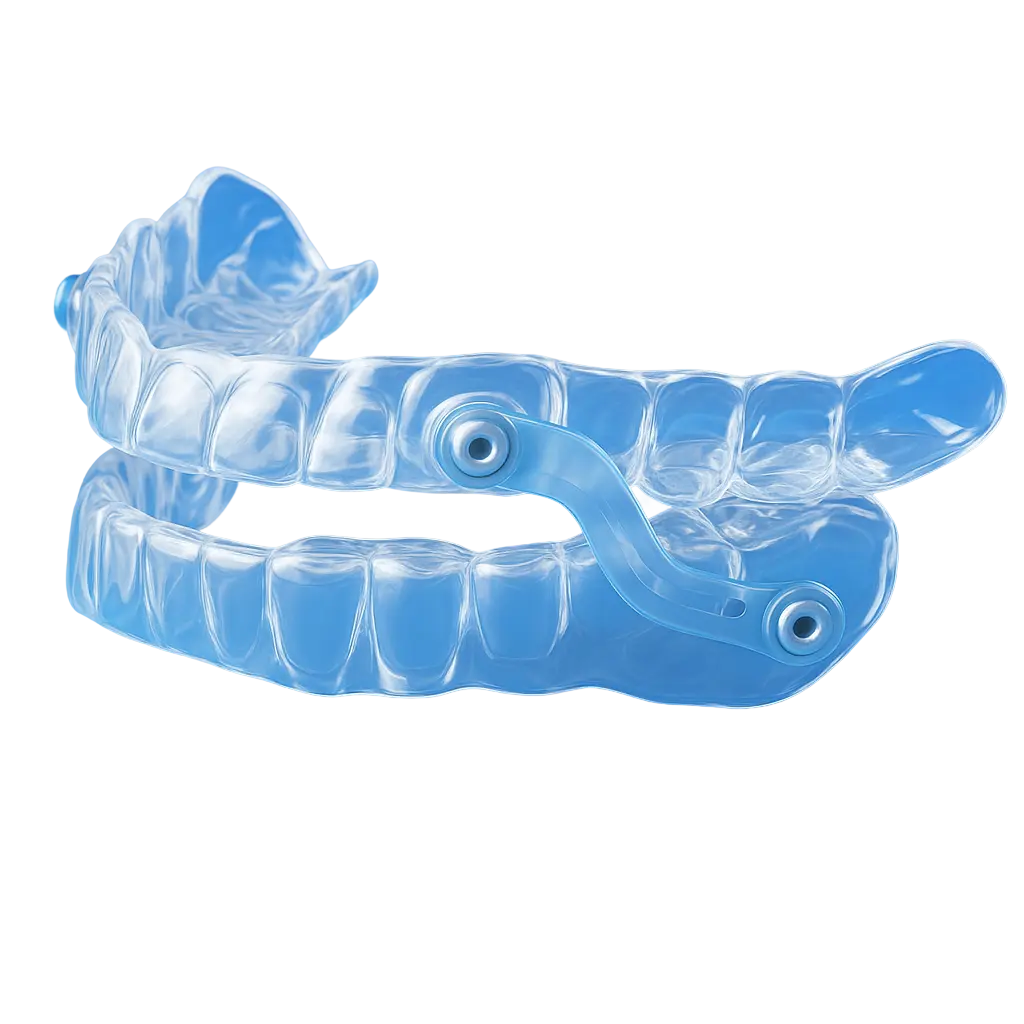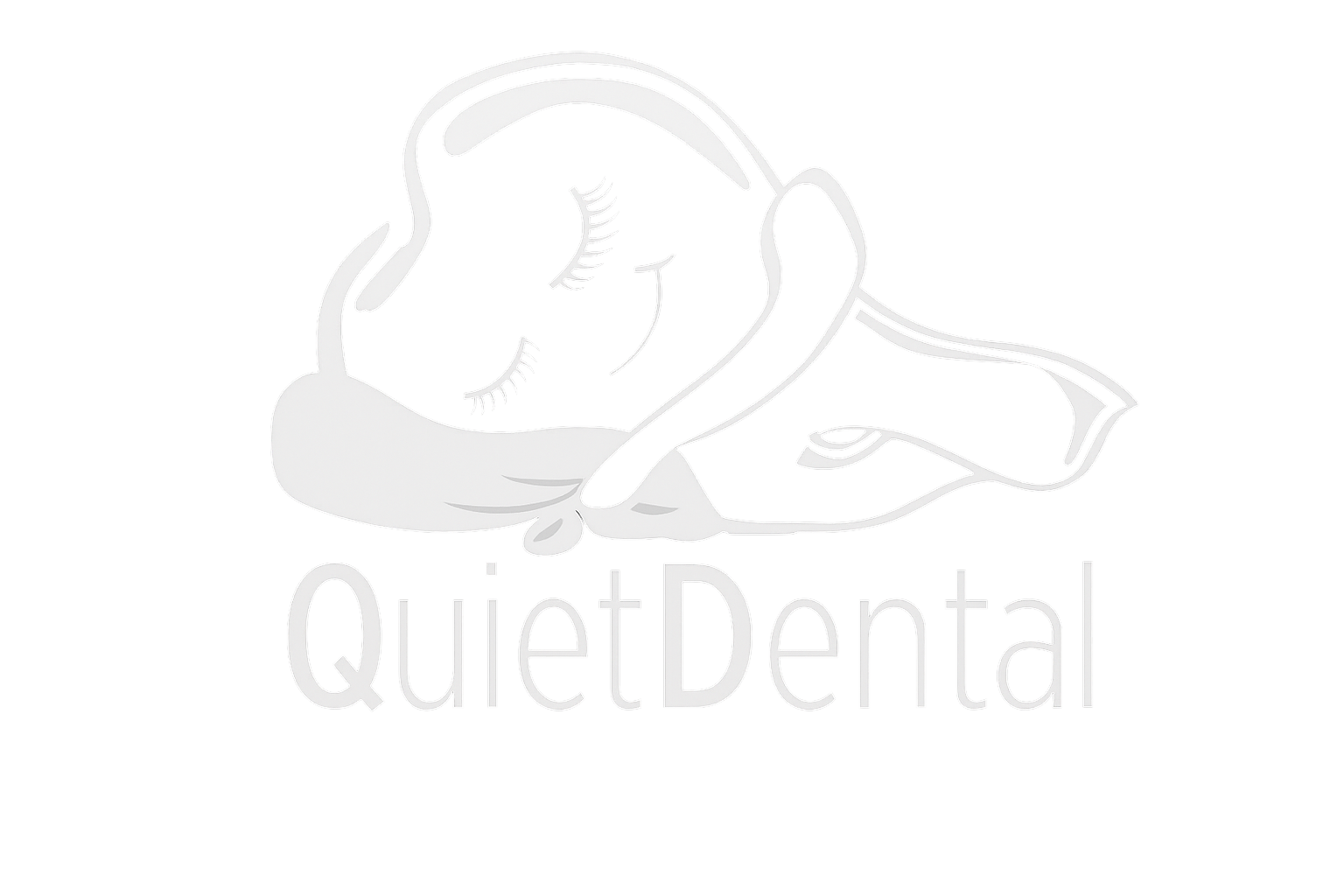8 min read
Sleep Apnea Treatment Could Be Free—If You Know These 5 Insurance Secrets
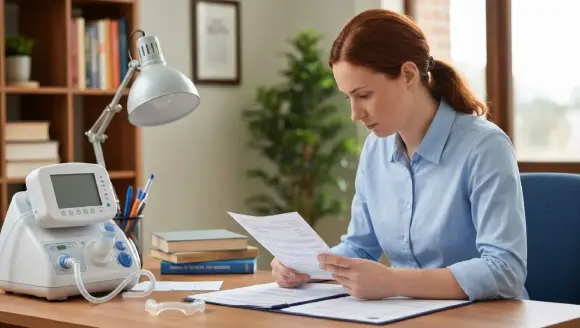
Key Highlights
- Your health insurance usually covers sleep apnea diagnosis and treatment.
- Most plans will pay for CPAP machines and oral appliances as durable medical equipment.
- Sleep apnea is a medical condition. Your medical insurance gets billed, not dental.
- The way to save money is to know your health insurance plan’s specific requirements.
- A formal sleep study and diagnosis are needed almost all the time for insurance coverage.
- Medicare and private insurance have different rules. Both can help pay for your sleep apnea treatment.
Introduction
Have you been told you have sleep apnea, or do you think you might have it? You may feel worried about how much sleep apnea treatment will cost. The good news is, your health insurance can help you pay much less. It can feel hard to figure out what your insurance provider wants you to do, but it can be easier than you think. This guide will show you the top things you need to know. You will learn how to get your sleep apnea treatment covered by your health insurance. You may even be able to get it for free.
Why Insurance Coverage Matters for Sleep Apnea Treatment
Facing sleep apnea can be hard, but it is an important part of getting healthy. It may feel costly because the studies on sleep and the devices you need can add to the bill fast. That is why having the right insurance coverage is so important.
With the right insurance plan and some helpful tips, you can make your treatment cost less. Your insurance provider will help pay the biggest bills, so you will find it easier to get good sleep. Let’s talk about why having this coverage is important for your health and for saving money.
Understanding Sleep Apnea and Its Impact
Sleep apnea is a problem that makes you stop breathing many times during sleep. This can happen if your airway is blocked or it closes up. When this happens, your body does not get enough oxygen. A tired feeling during the day is one of the main symptoms of sleep apnea, even if you feel you got a full night of sleep.
Other signs to look for are loud snoring, waking up trying to get air, and headaches in the morning. These symptoms of sleep apnea can make you feel tired all the time. They can make it hard for you to pay attention during the day. Sleep apnea is not just about losing sleep at night. It is a medical condition that needs to be treated.
The good news is there are treatments for sleep apnea that work. Many insurance plans will pay for these treatments if they help people. The most common help for sleep apnea is a Continuous Positive Airway Pressure (CPAP) machine or a special mouthpiece made just for you. Both help to keep your airway open while you sleep. This makes it easier to breathe, so you can get the rest you need with positive airway pressure.
Health Consequences Without Proper Treatment
Sleep apnea is not something you should ignore. It can have big effects on your health. If your body does not get enough oxygen again and again while you sleep, it will hurt your health over time. This stress can lead to some bad health issues. The consequences of sleep apnea can get worse if you do not take it seriously. Do you know what there could be if you keep living with sleep apnea?
Untreated sleep apnea can lead to high blood pressure, heart disease, stroke, and diabetes. When you have sleep apnea, your breathing stops and starts many times during the night. This keeps you from getting good sleep quality. Because of this, your heart rate and overall heart health can get worse. If you do not sleep well, your body cannot rest or fix itself the right way. Over time, this can affect your health in many ways.
The good news is that you can lower the risks linked to sleep apnea by treating it. When you use therapies like CPAP or oral appliances, you help your body get enough oxygen while you sleep. This helps you sleep better and keeps your body healthy over time. It also stops many of the bad consequences of sleep apnea before they even begin.
How Insurance Can Help Reduce Sleep Apnea Treatment Costs
The cost of sleep apnea treatment should not hold you back from getting help. Your health insurance is meant to help you pay for treatments you need, and this includes sleep apnea therapy. Many insurance companies know that helping with sleep apnea is important. Treating sleep apnea can keep people from facing bigger health problems later. That is why your insurance plan will often help cover sleep apnea treatment to support your health.
Most health insurance plans help pay for things from finding a problem to getting it treated. This reduces the money you need to pay yourself. But, how much insurance coverage you get depends on your specific insurance plan and provider.
Here’s how your health insurance generally helps:
- Diagnostic Tests: It can help with costs for a sleep study. You may get this test at a lab or at home.
- Treatment Devices: You can use it to get CPAP machines or oral appliances. These are types of durable medical equipment.
- Supplies: It can help you pay for replacement parts such as masks, tubing, and filters. You need these to use your medical equipment the right way.
The Big Confusion: Medical vs. Dental Insurance Coverage
One thing that often confuses people is if sleep apnea is paid for with medical or dental insurance. Some ways to treat sleep apnea use an oral appliance, and these are given by a dental practice. Because of this, many people think the dental insurance will cover it. But, most of the time, this is not true.
Sleep apnea is a health problem. Its testing and treatment are covered by your medical insurance. It helps to know this fact if you want your claims to be accepted without trouble. Let’s take a look at how your insurance coverage works for you.
What Is Sleep Apnea Medical Coverage?
Your medical insurance is the main way to pay for help with sleep apnea. Sleep apnea needs a doctor’s diagnosis, so your health insurance plan is the one that takes care of claims. The insurance plan covers the first visit to the doctor, any sleep study needed to find out if you have it, and the devices your doctor gives you for treatment.
When the doctor tells you to use a CPAP machine, it counts as durable medical equipment. Your medical insurance plan treats medical equipment like this in a special way. This means your insurance will pay for most of the cost of the CPAP machine and the supplies you need for it. Often, your insurance plan does the same for other approved medical devices too.
Private health insurance plans ask for certain things you must do. You need an official diagnosis from a sleep study and a prescription from your doctor. Some plans also want you to use in-network providers for your medical equipment. This helps you get the highest level of coverage from your health insurance.
What Is Dental Sleep Medicine Insurance?
While it may seem like dental sleep medicine insurance is part of dental insurance, that is not really true. The name can be confusing. A dentist who works in sleep medicine, especially with sleep apnea, deals with your medical insurance. Oral devices and sleep apnea appliances come from the dentist. However, they are billed to your medical insurance, not dental.
Are you thinking about using an oral appliance instead of a CPAP machine? There is good news. Most insurance plans cover these oral devices. They are seen as durable medical equipment, the same way that a CPAP machine is. So, your medical insurance coverage will help you, not your dental insurance.
Your dental insurance usually helps pay for cleanings, fillings, and crowns. Most of the time, it does not cover care for health issues like sleep apnea. A dentist who knows about sleep medicine will talk to your medical insurance provider. This is to help you get coverage for an oral appliance.
How to Know Which Coverage Applies
So, how do you know which coverage you need? The short answer is to begin with your medical insurance plan. Sleep apnea is a health problem. Because of this, your medical insurance is the right place to look for benefits. The best way to get clear answers is to be proactive.
Don’t wait to know about your plan until you start treatment. Talk to your insurance provider and ask clear questions. It is important to understand your medical equipment benefit. Coverage for CPAP machines and oral appliances comes from the durable medical equipment part of your plan. Make sure you know what your insurance provider will pay for these medical equipment items.
To know what is in your specific insurance plan, you need to:
- Call Your Insurance Provider: Get in touch with your insurance provider. Ask them if sleep apnea diagnosis and treatment, like sleep tests and CPAP machines or oral appliances, are part of your plan. A representative can talk to you about what is covered with sleep apnea.
- Review Your Policy: Check your insurance policy. Look for the part about Durable Medical Equipment. This is where you find out what percentage of sleep apnea-related medical equipment is paid for.
- Talk to Your Doctor or Dentist: Speak to your doctor or dentist. Experts in sleep medicine work with insurance often, so they know how these things go. They can help you figure out what you need and guide you through the next steps for sleep apnea diagnosis and medical equipment.
CPAP Insurance Coverage: What’s Included and What’s Not
A CPAP machine is often used to help people with obstructive sleep apnea. This type of medical equipment is important. Because of this, most insurance plans have cpap coverage. The coverage usually pays for the cpap machine, as it is seen as durable medical equipment. It also covers the supplies you need to make the machine work.
However, these policies can sometimes be tricky. There are some plans that may let you rent the machine for some time before you own it. Most plans will also have rules that talk about using the machine in a steady way. Let’s look at what your insurance will usually pay for and what it does not cover.
Types of CPAP Machines and Accessories Covered
Yes, health insurance will often help pay for a CPAP machine if your doctor says you need it for sleep apnea. The coverage is usually for the main machine that gives continuous positive airway pressure. Sometimes, the plan can help you get more advanced devices, like APAP or BiPAP, if your doctor says these are needed to treat your sleep apnea.
Your insurance is not just for the cpap machine. It can also help pay for the cpap supplies and replacement parts that you need. This means you can get things like the cpap mask, tubing, headgear, filters, and even the humidifier water tank. All these parts have to be changed often. This helps keep your cpap machine working well and makes sure everything stays clean.
While most basic accessories are included, some things like cleaning wipes, special CPAP pillows, or travel CPAP machines might not be. You should always check your plan to see what you get. A lot of insurance companies use a standard replacement plan like this:
CPAP Part or Accessory
Average Cost
Typical Replacement Frequency
Mask with headgear
$50 to $200
Every 3-6 months
Mask cushion
$20 to $60
Every month
Tubing (non-heated)
$5 to $35
Every 3 months
Air filters
$5 or less
Every month (disposable)
Water chamber
$20 to $50
Every 6 months
Common Insurance Requirements for CPAP Devices
Insurance companies need to know that a CPAP device is needed for your health before they pay for it. You have to follow some steps to show this. Most insurance policies ask for a real diagnosis and a doctor’s prescription. They want this before they start thinking about covering the CPAP device as medical equipment.
Many providers often help pay for a cpap machine rental for a few months. This period lets you try the cpap machine to see if the therapy helps you. To keep this coverage, you have to show that you use the cpap machine often. This rule is called “compliance,” and it is very important in most insurance policies.
Here are the usual steps you need to take to get your CPAP covered:
- Get a Diagnosis: You need to do an overnight sleep study. A doctor has to say you have obstructive sleep apnea.
- Obtain a Prescription: Your doctor will write a prescription so you can get a CPAP machine.
- Prove You’re Using It: The CPAP machine can see how much you use it. You have to use it at least 4 hours most nights, like 70%, to keep your coverage.
Differences Between Private Insurance and Medicare Coverage
Both private insurance providers and Medicare give coverage for CPAP therapy, but their rules are not always the same. If you get Medicare, your CPAP therapy coverage is in Part B. After you pay your Part B deductible, Medicare will pay for 80% of the cost.
Medicare will begin by paying for the rental of a CPAP machine for three months. Your doctor must check that you use the machine and that it helps your issues. If you meet the rules, Medicare will keep paying for the rental. When you have the cpap machine for 13 months in a row, it will be yours.
Private insurance plans usually use the same basic rules. But the details can be different for each one.
- Compliance Rules: Some private insurance providers may ask you to use the machine for more hours, or sometimes fewer hours, than others.
- In-Network Providers: Many private insurance providers want you to get your equipment only from shops they work with to help you get the most out of your coverage.
- Deductibles and Coinsurance: What you pay will be based on your plan’s deductible and coinsurance costs, and these can be different from the amount Medicare asks for, which is usually 20%.
Oral Appliance Therapy and Insurance Secrets
If a CPAP machine does not work for you, that is not a problem. There is a different option that many people find good. The option is called oral appliance therapy. These oral devices are made to fit your mouth. They feel comfortable to use. A lot of the time, medical insurance will help pay for these oral appliances.
Many people do not know that sleep apnea appliances can be used for sleep apnea treatment. A lot of people also do not know that insurance can help cover the cost for one. Knowing how to get insurance for these can make the sleep apnea treatment feel much easier. Let us see how sleep apnea appliances work and talk about how to get your insurance to help with the cost.
What Are Oral Appliance Devices for Sleep Apnea?
Oral appliance devices are mouthpieces made just for you to wear at night. You put them on when you sleep. They look a lot like a sports mouthguard or an orthodontic retainer. These oral devices help people with sleep apnea, especially obstructive sleep apnea. They keep your airway open while you sleep. They do this by moving your lower jaw or tongue. This stops the soft parts in the back of your throat from closing up.
These sleep apnea appliances work well for people with mild or moderate sleep apnea. Many doctors suggest them if you have trouble using a CPAP machine. This is because sleep apnea appliances are small and quiet. You can also take them with you when you travel. A lot of people say that there is more comfort when using them at night.
A dentist who knows about sleep medicine will make a device for you. The dentist takes a mold of your teeth, so the device fits your mouth well. A good fit is important. It makes the device feel comfortable and work better for sleep apnea.
Oral Appliance Therapy Insurance: Eligibility and Steps
Are oral appliances for sleep apnea covered by insurance? Yes, they are. Most medical insurance, including Medicare, covers these oral appliances as durable medical equipment. If you want to check your insurance coverage, you should follow a few steps. These steps help show that the treatment is needed for your health.
First, you need to get a formal diagnosis of obstructive sleep apnea. A sleep study is used to find this. A doctor will then give a prescription for an oral appliance that helps with sleep apnea.
In many cases, if your sleep apnea is very bad, your insurance may ask you to try a CPAP machine first. You have to show that you can’t use it, or that it does not work for you. Only then will they often give approval for sleep apnea appliances.
Here are the usual steps to help you get your oral appliance paid for:
- Sleep Study and Diagnosis: Do a sleep study to check if you have sleep apnea.
- Prescription: Get your sleep doctor to give you a prescription for an oral appliance.
- Check with Insurance: Call your medical insurance provider. Ask about your coverage and see if you need to get approval before you visit the dentist.
AADSM Insurance Guidelines Explained
The American Academy of Dental Sleep Medicine (AADSM) gives dentists clear steps for handling insurance when it comes to oral appliance therapy. The AADSM does not make rules for insurance, but it does offer best ways to help dentists. This way, people can get the right care in sleep medicine and have a better chance of getting their oral appliance covered by medical insurance.
A dentist who follows AADSM rules knows that sleep apnea is a health problem. In their dental practice, they bill your medical insurance and not your dental insurance. They know what papers insurance companies need, like a letter of medical necessity and reports from your sleep study. This can help to make everything go better for you when you ask for approval.
When you pick a qualified AADSM dentist, you get medical advice from someone who knows a lot. This dentist not only helps with your care, but also knows the way insurance works. They will take care of the paperwork for you. They speak with your insurance company, so you do not have to feel stress or get lost in doing the claim on your own.
How to Get Insurance Approval for Sleep Apnea Diagnosis and Devices
Getting your insurance to cover treatment for a diagnosis of OSA does not need to be hard. The best thing you can do is to be ready. If you have all the needed paperwork and know how the process works, you can make this go well. This will help your insurance claim for a diagnosis of OSA get done without problems.
Whether you need a CPAP device or an oral appliance, the steps to get them approved are almost the same. You have to give your insurance company the right proof. This shows the treatment is needed for your health. Here is how you can help make it happen.
Documentation Needed for Insurance Claims
Getting the right paperwork done is the most important thing when you want your insurance company to approve your claim for sleep apnea treatment. The insurance company needs to see clear records that show why you need the device or therapy for sleep apnea. If you do not have the right documents, your claim will most likely not be approved.
The process begins with you having a sleep study. This test shows if you have sleep apnea and tells how bad it is. It is the main thing for your claim. After this, your doctor will give a prescription. Most of the time, this is called a “letter of medical necessity.” The letter will say why you need this treatment and show that it is the best way to treat your condition.
To make sure your claim goes through fast, you should get these papers ready:
- Sleep Study Results: You need to have the full report from your sleep study. This can be from an in-lab sleep study or a home sleep study.
- Letter of Medical Necessity: A letter and a prescription from your doctor are needed. It must say that you need the device.
- Compliance Data: To keep CPAP coverage, you have to show data from your device. This proves that you use it the way the doctor says.
Tips for Obtaining Medical Referrals and Codes
Navigating health insurance can feel hard when it comes to referrals and billing codes. It is like you have to learn something new. There is no way around it if you want to see a sleep specialist. Most plans say you need to get a referral from your primary care doctor first. This referral is what starts the process with your health insurance.
After you meet with the specialist, they will ask you to do a sleep test. This might be a laboratory sleep study or an at-home sleep test. The doctor will use the results to write down certain codes in your file. These codes are very important for your insurance to pay for the sleep test and any medical equipment you might need later.
Here are a few tips to help you get through this part more easily:
- Get a Referral First: You need to see if the plan you have asks for a medical referral. If it does, have one before you set up any sleep study visit with a specialist.
- Confirm Pre-authorization: It is a good idea to talk to your doctor’s office or your insurance company to find out if you need a pre-authorization for the sleep study or device.
- Keep Records: Keep all the paperwork and referrals that you get from your doctor’s office.
How Dentists Bill Sleep Apnea Treatments to Medical Insurance
Here is one thing many people don’t know. A dental practice with special training can use your medical insurance to cover your oral appliance instead of your dental plan. The reason is that sleep apnea is a medical issue. The oral appliance is seen as medical equipment that helps with sleep apnea therapy.
Dentists handle this by following a clear process. A dental practice that offers sleep apnea treatment can bill medical insurance. They use your sleep study results and the prescription from your sleep doctor. With these, they file claims using medical codes. For sleep apnea treatment, they work with insurance companies in the same way that other medical providers do.
This process is a big help for you. It lets you use the durable medical equipment parts of your medical plan. These are usually much better than what you get with a dental plan. A dentist with experience will be with you at every step. They will get the pre-authorization and send in the final claim for you.
Conclusion
To sum up, the way insurance coverage works for sleep apnea treatment be something you should know. It will help you find good choices for care. When you use the right information, you can lower how much you pay from your own pocket. You will feel confident to make wise choices about care.
It is key to tell the difference between medical and dental coverage. You should know what sleep apnea treatments your insurance covers. Learn the steps to get approval and help from your insurance. When you take action early, it can help you a lot during your treatment for sleep apnea.
You are not alone in this. A dental sleep medicine provider will help guide you. They be able to make the insurance steps feel simple. If you have any questions or if you need support with sleep medicine or sleep apnea, talk to your provider. They be there to give clear answers and support as you work for better sleep health.
Frequently Asked Questions
From how the AMA works to what to expect during the process, here are the most common questions we hear, answered simply and clearly.
Normally, insurance coverage is for sleep apnea and not for just snoring. If you have sleep apnea, and a sleep study shows that, then sleep apnea therapy will be covered. But, if you only snore and do not have sleep apnea, your insurance provider will not cover your treatment.
To have Medicare Part B cover a CPAP machine or oral appliance therapy, you need to get a sleep apnea diagnosis with a Medicare-approved sleep study. After that, you must pay your deductible. You also have to follow the usage rules, mainly in the first three months when you have the CPAP machine. This is important for both the CPAP machine and oral appliance from Part B.
Yes, private insurance providers do have specific requirements. You usually need a diagnosis of OSA from a sleep study. A prescription is also needed. Many insurance companies will want prior authorization before they approve CPAP coverage or an oral appliance. They may also want you to use their in-network suppliers for these services or devices.
